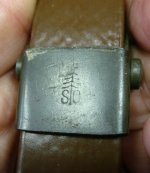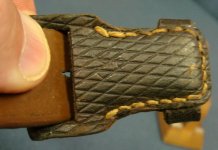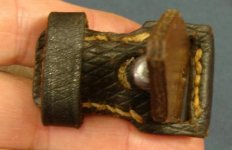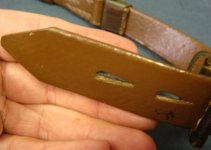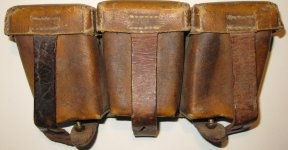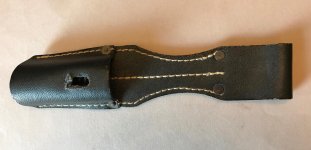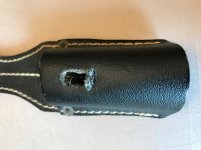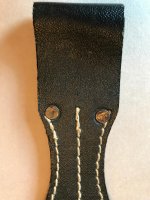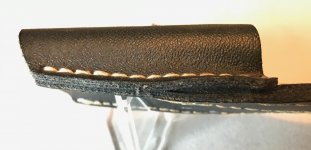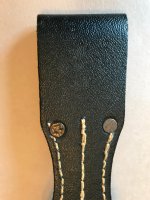I am going to talk with a friend of mine about this. Somewhere in the dim recesses of my memory think I may have seen a black rubberized thong 30 odd years ago. I have observed instances of a web German gas mask strap with pointed, rubberized tip used as an ersatz replacement rifle sling. This may have been factual in some instances or a collector enhancement (probably most) in others. What I wonder is why the thong would be black and the sling finished in brown? I believe the only black leather K98k slings/thongs came from Austria and were post-WW2. If this sling is really from the WW2 period, I would have expected some others would have survived. Most likely they would be in very poor condition because of eventual hardening of the rubberized material used at the time. Consider too the painted, composite body A. Fischer Berlin police frogs. Either they are petrified in unissued condition or exhibit cracks and heavy damage. If anything (other than an outright fake) this type of sling might be of post-WW2 manufacture and if so, I would expect it to be from E. Germany or possibly Czechoslovakia. It was the E. Germans that came up with the cloth fiber, impregnated composite RG34 cans as well. I would like to hear what Bruce K. has to say about this sling...




